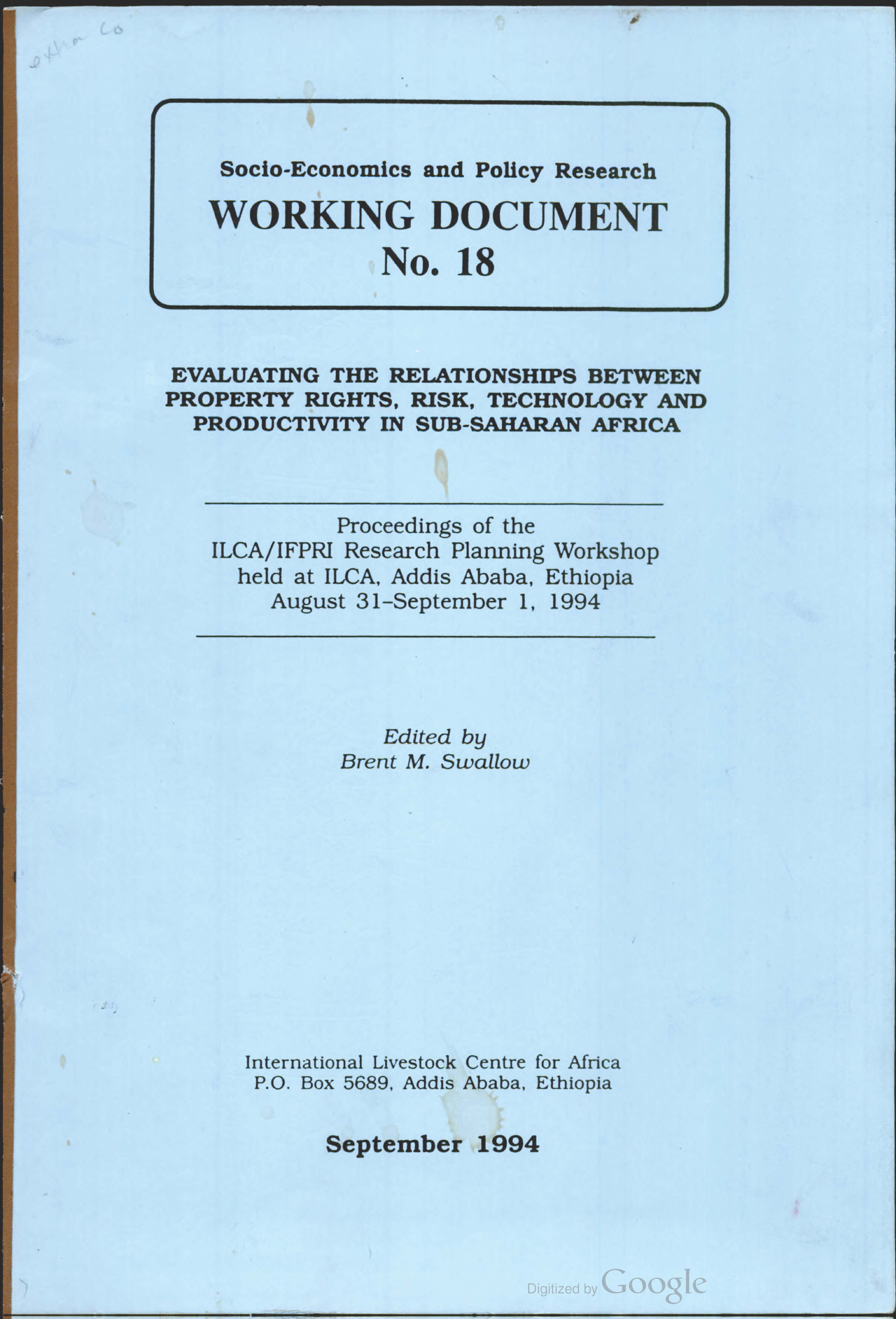ILCA/LTC research on property rights and alley farming in West Africa
Abstract
IITA developed alley cropping (also called hedgerow intercropping by ICRAF) in the mid 1970s to alleviate the problems of reduced soil fertility, reduced yields and soil erosion that were associated with population growth and reduced fallow periods. In the early 1980s this technology was adapted by ILCA to serve as a source of feed. On-farm research was conducted in two locations of South-West and South-East Nigeria. The locations differ in terms of population density, soil fertility, land tenure and typical farm layout. Francis (1987) conducted some preliminary investigations of the relationship between property rights and the adoption of alley farms in the two areas. His study led to a multi-country study across the humid zone of West Africa. The study was coordinated by ILCA, carried out by the Land Tenure Centre and national partners, and funded by the U.S. Agency for International Development. The study was undertaken in three West African countries: Nigeria, Togo and Cameroon. The objective of the study was to determine the status of land tenure and property rights in the recommendation domain of alley farming, and the way that property rights may influence the adoption of alley farming and other agroforestry techniques. This paper summarizes results from the paper by Lawry and Steinbarger (1991) and presents some new analysis.

